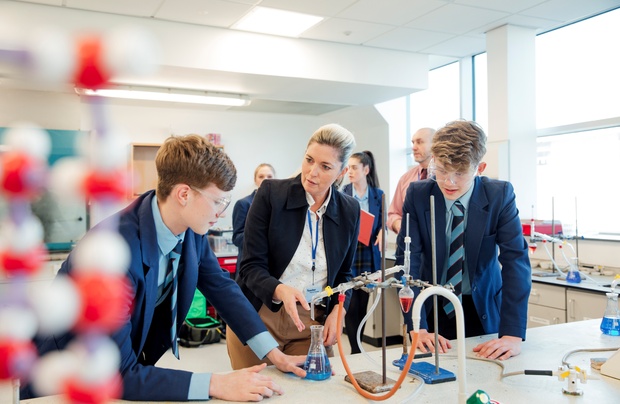You’re right on the money if you associate that image with science, technology, engineering and mathematics (STEM).
Inquiry learning, creativity, problem-solving, and hands-on activities are part and parcel of STEM, but it’s, oh, so much more.
And this is where it gets confusing.
How your school ‘does’ STEM could be a world away from how it unfurls in the school down the road, or on the other side or the country, whatever school sector they’re in.
Sure, we have our national curriculum and state/territory-based syllabus, but they’re a guide not prescriptive about how the four disciplines of STEM work together or as separate curriculum areas in your school.
Add to the mix, each discipline – and not just STEM – has its own signature pedagogy, their ways of teaching and instruction.
Think of science as inquiry-based instruction; mathematics as linear and sequential in how it’s taught.
And, you may not find the clarity and direction you seek if you turn to university researchers. It’s a contentious scholarly field. That’s in spite of governments, school education systems and policy makers declaring STEM a global priority and driver of modern society, the future workforce and more.
STEM perspectives abound
There’s a tussle in scholarly circles about whether you teach STEM as multi, inter, even cross disciplinary, then there are terms such as combined and integrated to contend with. Then here’s all the various bloated STEM spinoff acronyms – too many to list.
“How schools teach STEM is messy”, one researcher admitted.
Another researcher, who’d been a ‘fly on the wall’ in high school staff rooms where STEM program discussions were held, likened it to an AFL scrum. There were some verbal power plays going on as they battled with their perspectives to find a way forward.
Oh, and when you look to industry for direction, engineers like to quip that engineering is the ‘glue’ that brings the other STEM disciplines to life through real-world applications.
Teachers are confused about the diversity of ways STEM is implemented and integrated into classrooms.
In a word, it’s inconsistent.
Best practices won’t pass muster
So, how can we compare ‘best practices’ and, as we always need to do, tweak them for our contexts? Even the term ‘best practice’ is now passe. Instead, we should be thinking about smart practices approach that acknowledges practices are adaptable and applicable to different needs.
Then there’s an Aussie researcher, John Williams from Curtin University, who said at a 2019 conference that we don’t need any new pedagogies to integrate STEM education.
Just look to the well-established STEM principles, he said. That means integrating the disciplines, engaging students in collaborative activities, focusing on processes, being project and/or problem based and ensuring STEM happens as part of the school day, not an optional extra.
Sounds easy, but is it?
A Re-Engineering Australia report in 2022 found that “most [school] STEM programs today comply with few of the guiding principles of STEM”.
In fact, those programs are mostly entertainment value for learners, rather than developing understanding and achieving academic goal. At fault was the drive to retrofit STEM into an “existing siloed” curriculum.
You’ve probably heard of particular Australian schools that have tried to foreground STEM in how their school runs. In my area – regional NSW – one school decided to have all Year 7 and 8 students do integrated STEM as a huge part of their learning and they also engaged local industry and businesses in their program.
When I spoke to the program’s co-ordinator in its first year, 2016, this is an inkling of the mental gymnastics and challenges he had to manage.
“I’m working collegially with staff I’d not normally work with, from other faculties. I’m learning from their practices and improving mine and we’re becoming better teachers,” he said.
“I’ve also had to learn to speak the metalanguage from other areas, such as science education. Then I’ve had to make sure when I teach a science topic or content, I’m using consistent language with others to make that clear link between science and STEM.”
It sounded like he was still finding his feet.
I had asked him about his hopes for the program five years down the track. His vision was to help other schools get similar programs running that scored high engagement with learners.
A lust for STEM
So, what happened?
Three years after the program started, some of those learners had moved to a nearby school where I was teaching mathematics. I often heard in that faculty staffroom about how much ‘catch up’ those STEM-foregrounded students had to do in their new maths classes.
“They’re in Year 10 and they don’t even know what a protractor is,” one teacher said.
And, when I taught in that first high school last year, staff there would shake their heads at the program. It simply didn’t work, despite the promise and potential. They were scrambling to address enormous gaps in learning, especially English, in their Year 11 and 12 students.
So, even if a school throws everything it has at a STEM program, there’s no guarantee of success.
As teachers, what should we do?
I’d argue to keep putting your hand up to do professional learning and development in STEM when it’s offered and ‘consume’ podcasts and YouTube vids about it. Chances are you’ll have to teach it out-of-field.
Apart from that, let’s leave this messy question about how to teach STEM to your principal. With the shifting goalposts, it’s just fine to handball that one to leadership to deal with. They’ll put their spin on it, so you’ll just have to follow suit.














